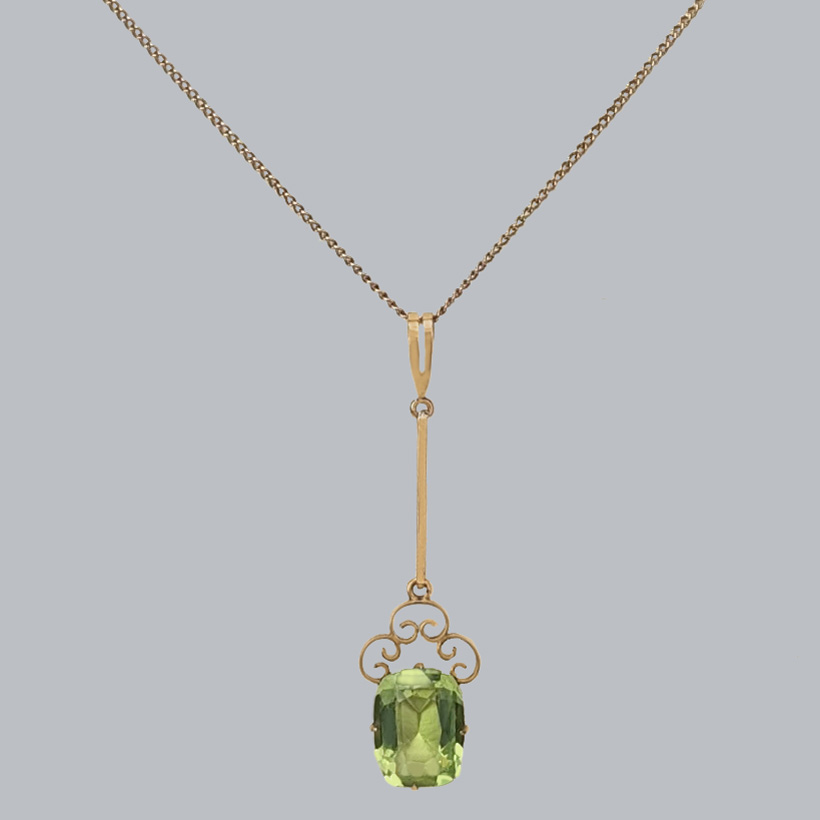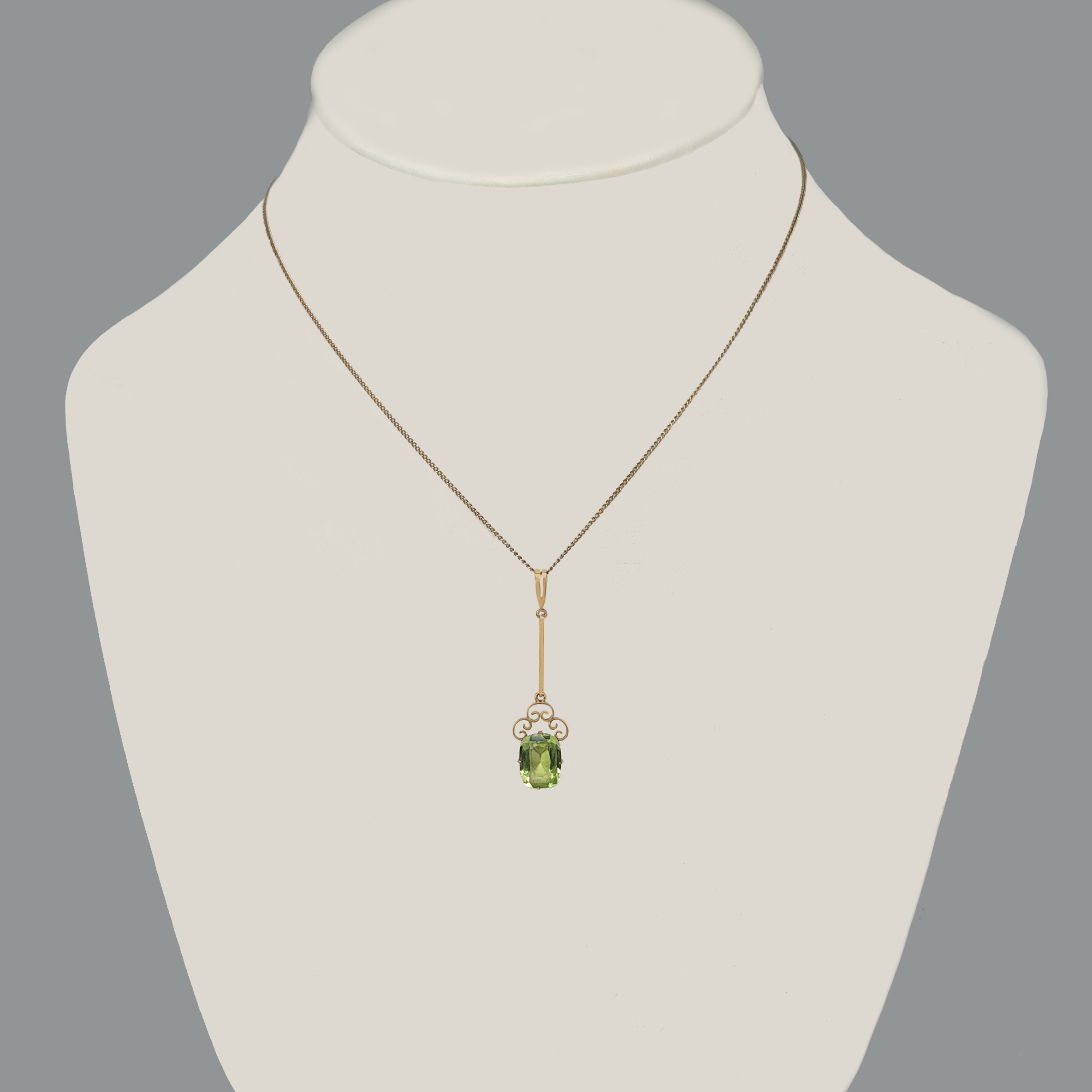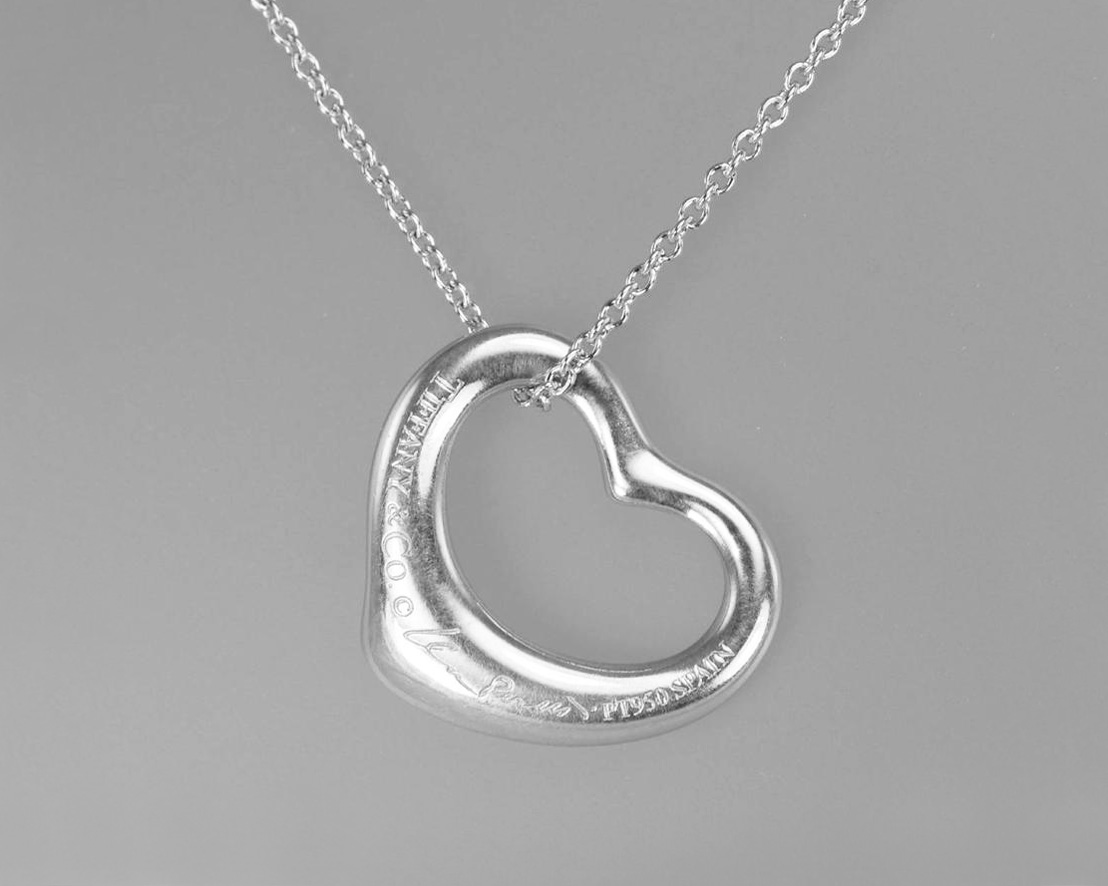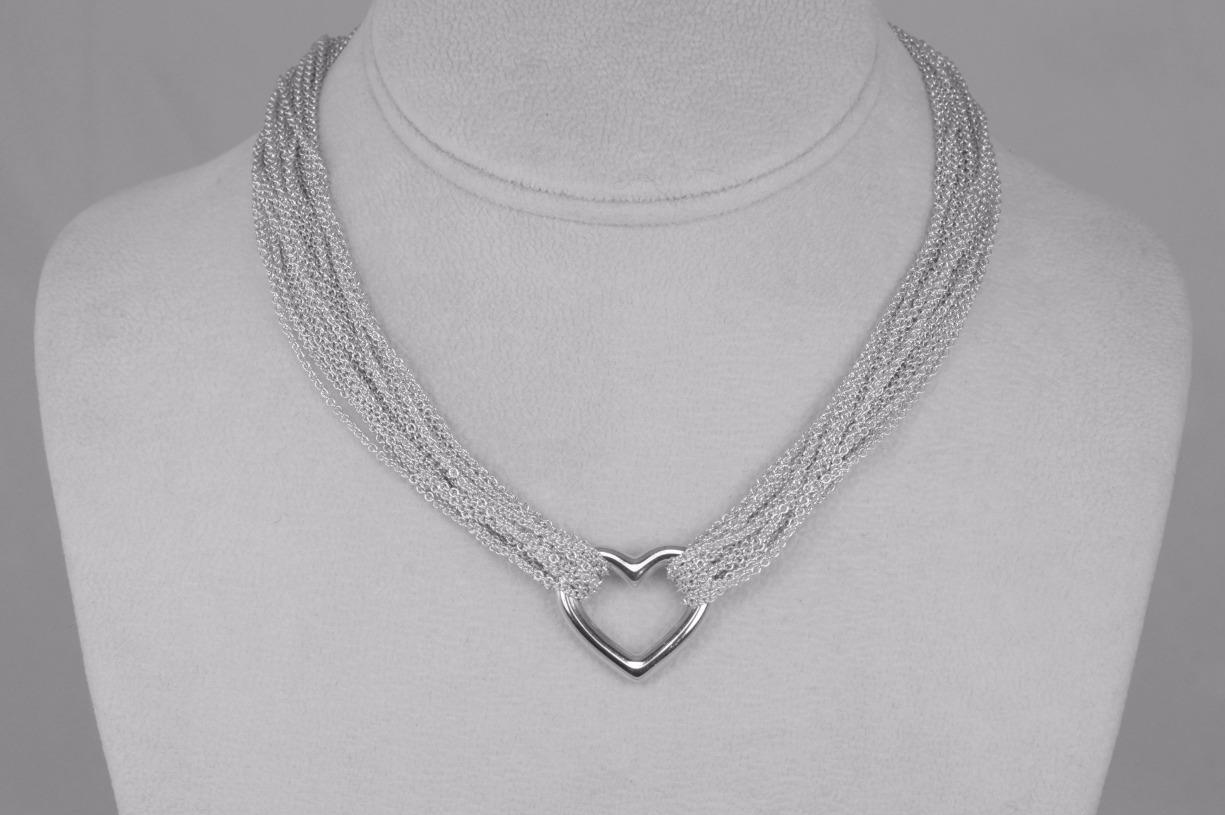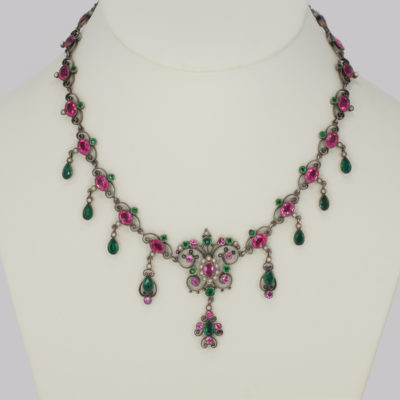Description
Gorgeous Edwardian peridot pendant
Beautifully designed this necklace is hand crafted in 9ct gold
Featuring an oblong peridot below an openwork scroll design.
The peridot is suspended from a knife edge drop
To the top a bale with fine link chain that fastens with a traditional spring ring clasp
This fabulous necklace looks stunning when worn
Pendant Drop 4.5cm (1 3/4″)
Chain length 16.5″ (42 cm)
Pendant marked 9ct gold on the knife edge drop
Clasp on chain also marked 9 ct gold
Weight 3 grams.
Period circa 1910
In excellent original condition.
Comes in presentation box illustrated
Our Ref 2349
Our vintage necklace collection
Peridot
In the past peridot was called olivine. It is often mis-identified as chrysolite, a yellow – green chrysoberyl. The finest peridot is a deep apple green colour and was first found on the Isle of St John in the Red Sea. Peridot has been used in jewellery at least since the Roman times. Most peridot available today is of Victorian extraction or later. In the 1700s peridot was used to decorate fob chain ornaments and objects of virtue. In the early and mid-Victorian times ladies wore complete parures, tiara, necklace, earrings, brooch, bracelets, and ring. At the end of the 19th century peridot found favour in 9ct and 15ct open work pendants, often in the presence of pearls
Gold
Carat can refer to the quality or purity of gold – pure gold i.e. a metal that is 100% gold and nothing else but gold, is known as pure gold or 24-carat gold. So for example with a ring which is 18ct i.e. 18/24s gold or put another way, 18 divided by 24 is 0.750 or 3/4. You may see jewellery marked 0.750 which is a somewhat modern way of writing 18ct as we say in the UK and 18k as they say in the rest of the world. In general, if we are talking of UK jewellery a piece marked 750 will have been hallmarked/produced after 1975. The hallmark standard of 15 carat .625 was ended in 1932 and now has a certain cachet and of course an elevated price. The colour of pure gold is yellow. However, if gold is mixed with other metals it can become a silvery colour, known as white gold, or copper when it is then known as rose gold. Also, the colour of rings can be changed simply coating the ring with another metal. A common procedure is to rhodium plate rings to make them silver in colour, this procedure is also used to make white gold rings brighter and shiny, however rhodium plating wears off over time.


